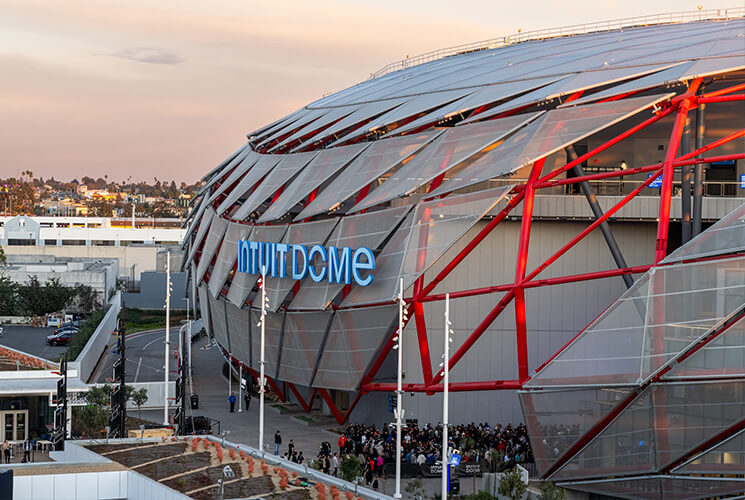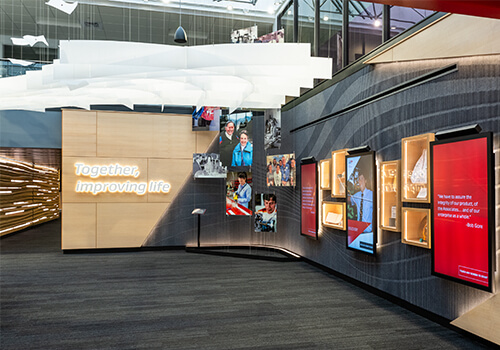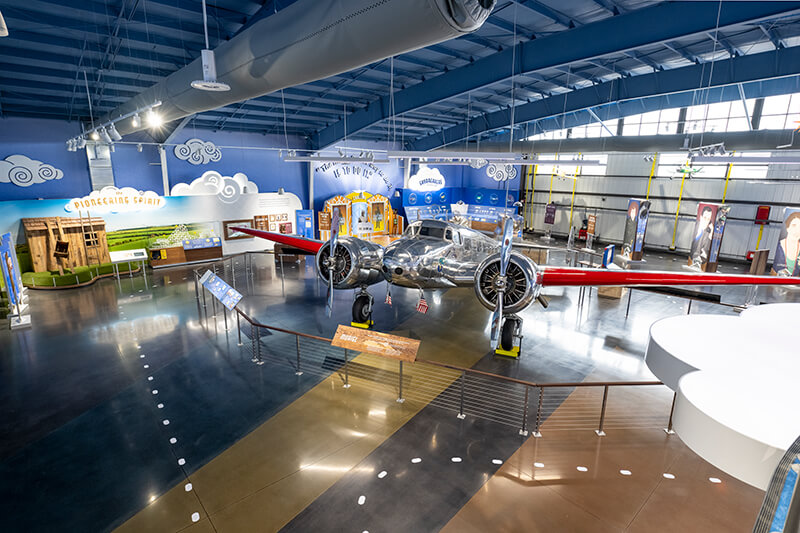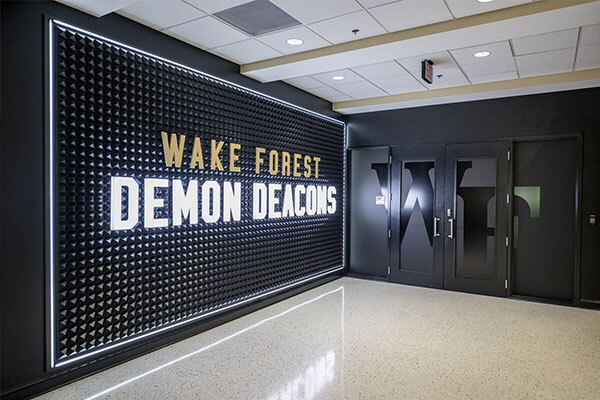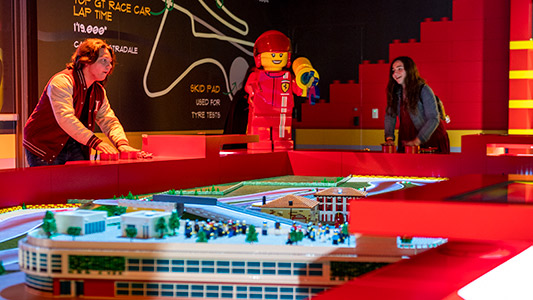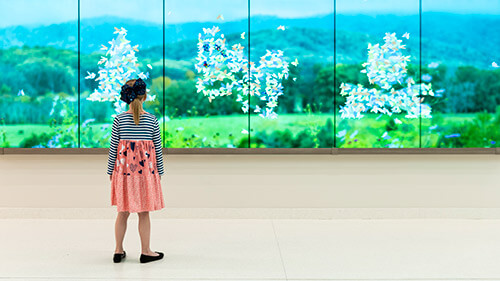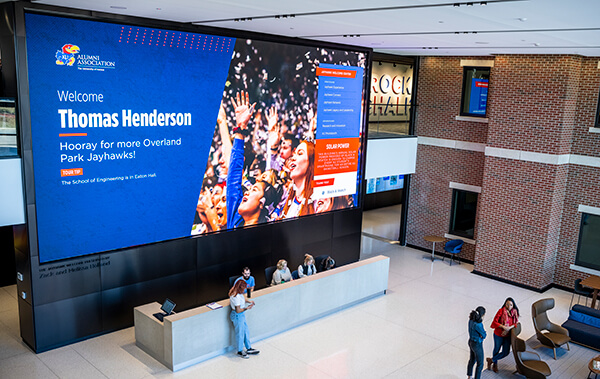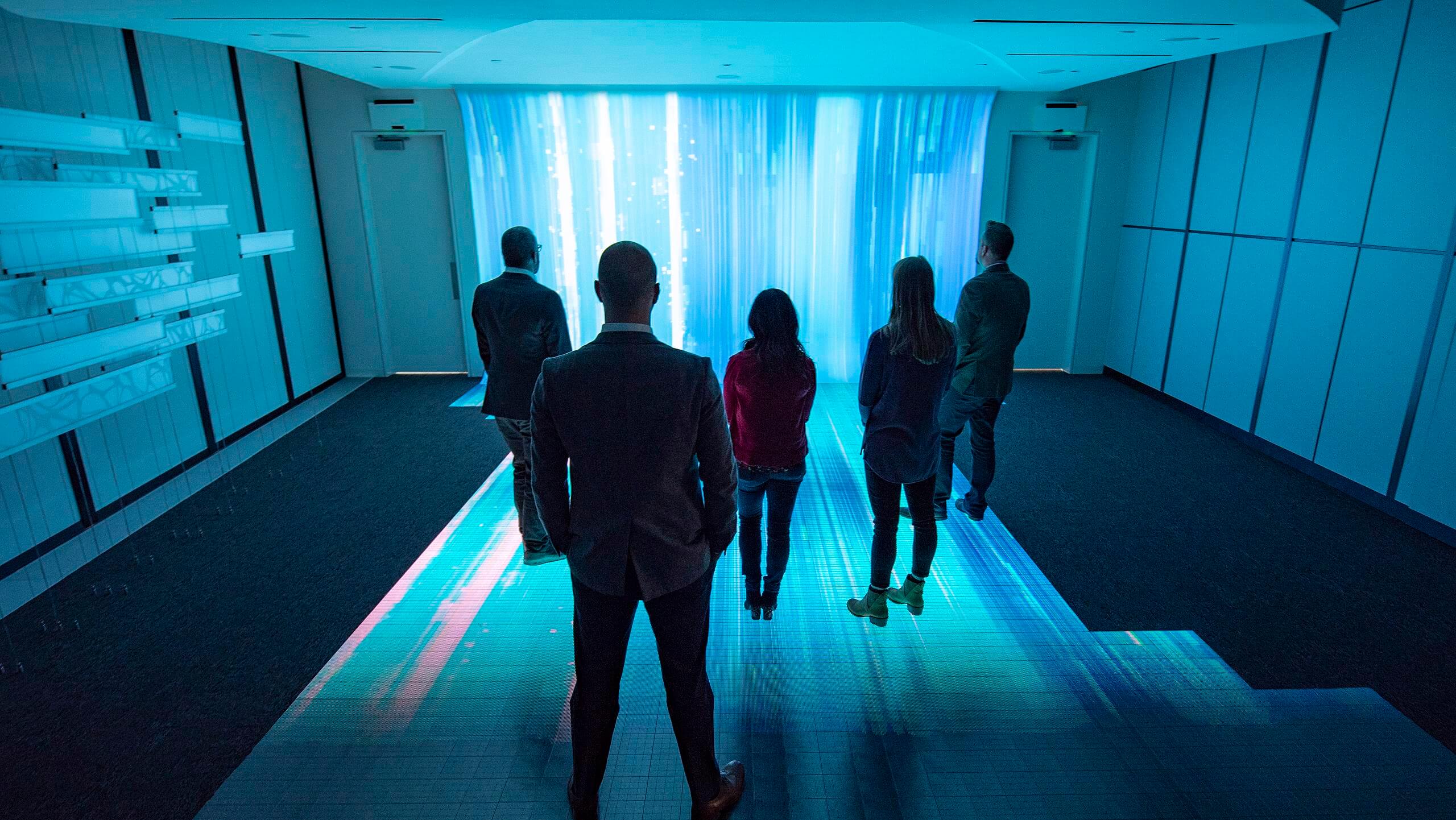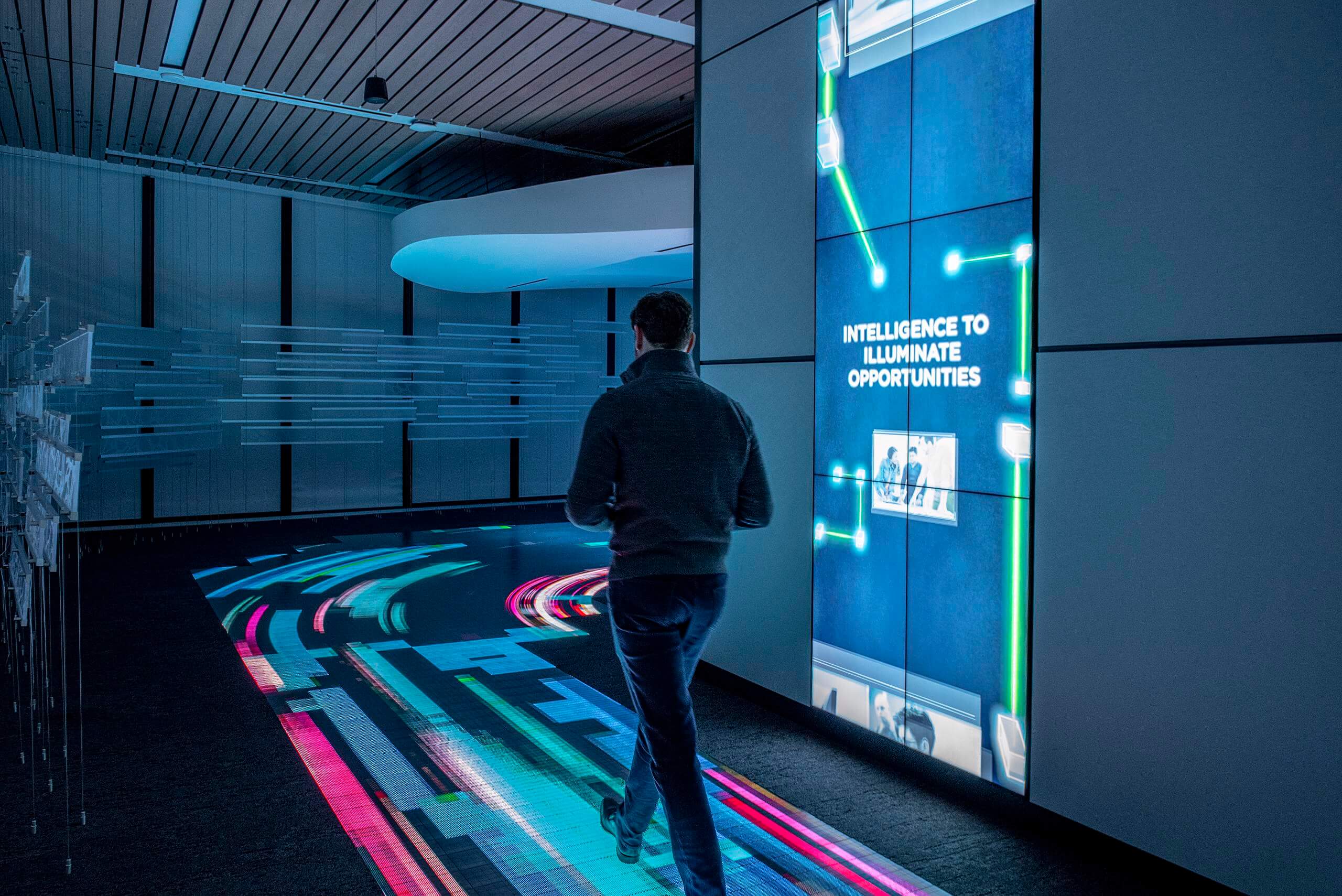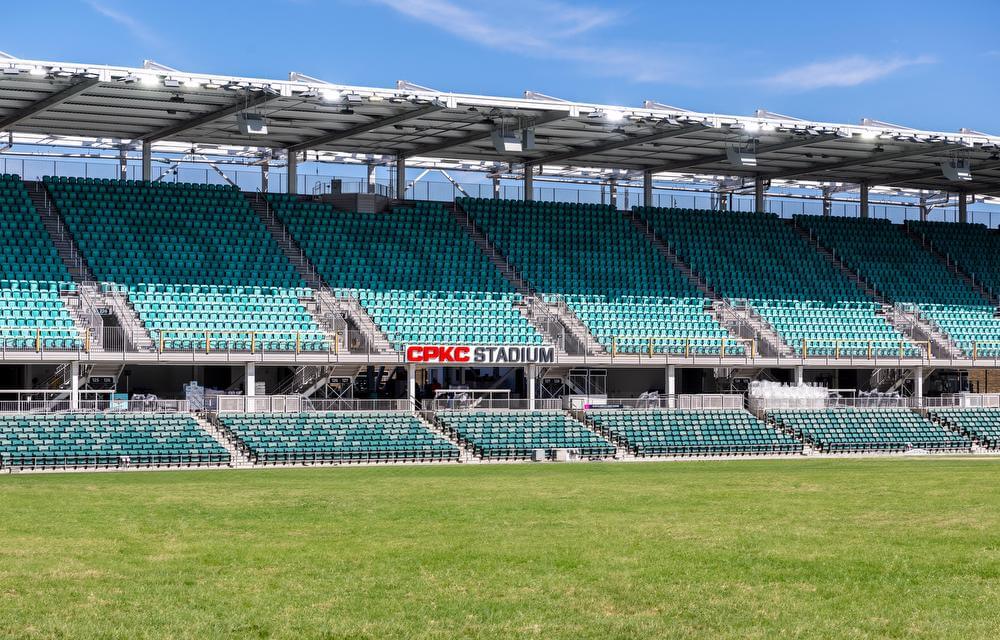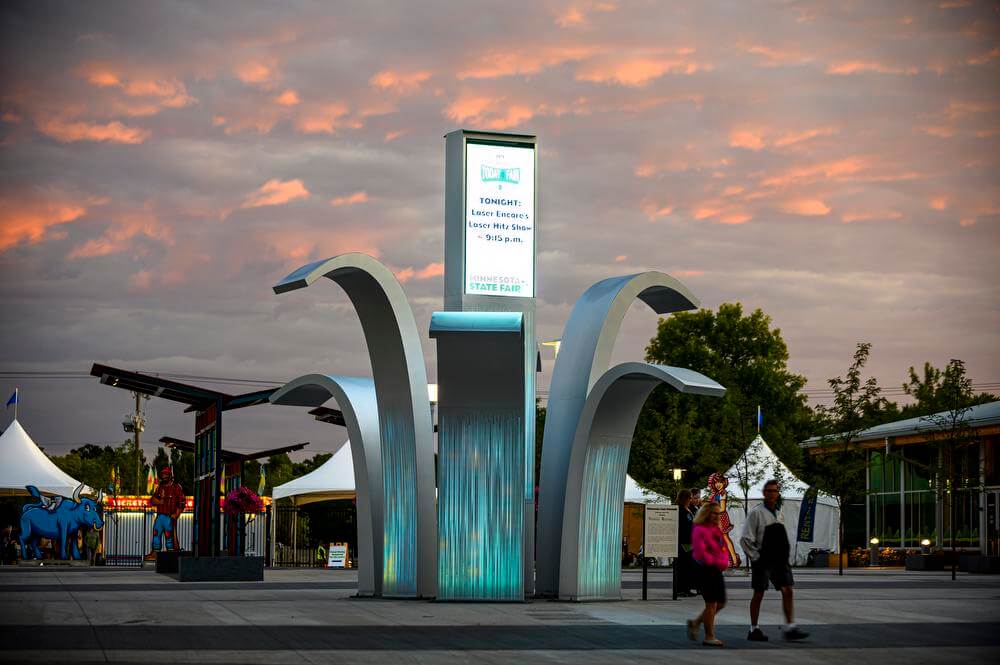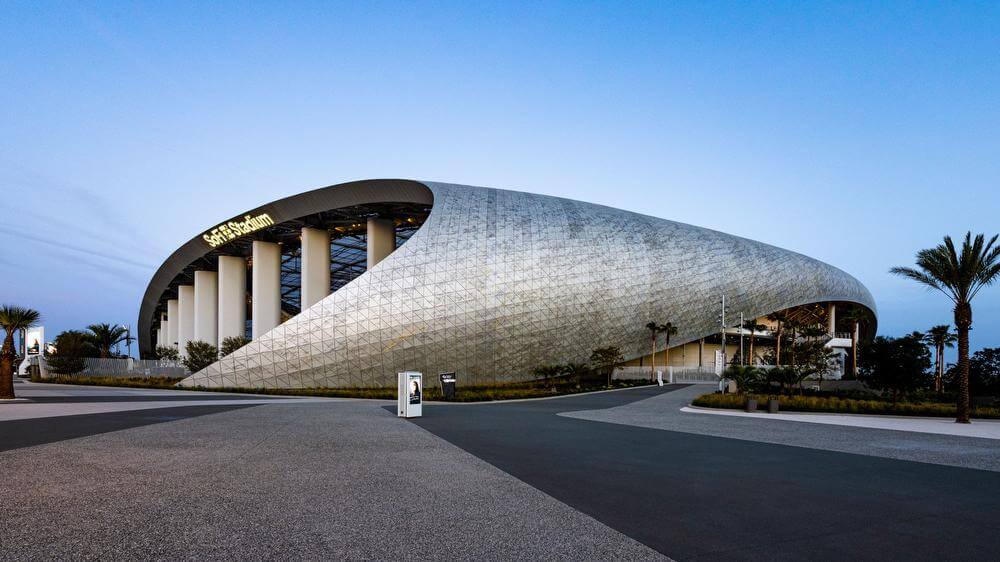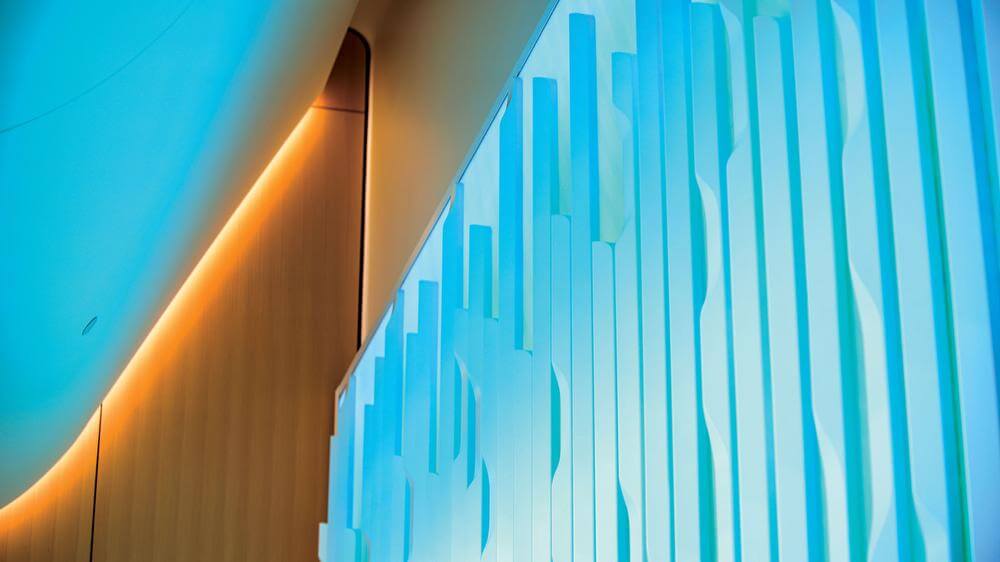Sparking the attention of tech experts, enthusiasts and novices alike, ideas of the metaverse continue to stir some serious buzz. It’s becoming increasingly clear that in addition to digital developments, such as augmented reality (AR) and virtual reality (VR), technology and experience design will also have a prominent seat at this developing cyber table.
We brought together four Dimensional Innovations thought leaders, all with different backgrounds, perspectives and disciplines to discuss the possibilities and uncertainties behind the metaverse and related technologies. They shared their hypothetical, yet hopeful, opinions regarding this emerging technology, including how DI could play a role, both short and long term.
How would you currently define the metaverse?
Brandon Wood (BW): I see it as more or less an evolution of the internet. Right now, the internet is mainly visual, two-dimensional, and I think the metaverse is taking that and making it three-dimensional. It’s the evolution of the connectivity we already have and adding more layers to it.
Chad Hutson (CH): I agree – much like the current web, but thinking of it as a VR/AR decentralized internet where commerce and creation are intertwined. The things you can do or buy in this space can, in some ways, mirror what’s happening in the real world. Maybe the really simplified version is that it’s the future web that ties in VR, AR and other 3D platforms.
How do you think the Metaverse and related technologies align with the work we do here at DI–now and in the future?
Chris Riebschlager (CB): We already have our hands in the physical space, and we already have a lot of smart people who can create a variety of technological and virtual experiences. I think the whole idea of participation is going to evolve. What does it mean to go to a concert or attend a meeting? I think we at DI could help shape what those experiences are and how we find ways to merge the virtual and in-person experiences.
BW: One of our many expertise is telling stories and creating experiences that tell those stories. Right now, we do that in physical space with physical interaction. But all of that expertise extends to these digital experiences. I see DI coming in that space.
CH: I think experience design is very closely tied into this, be it physical or virtual. Whether it’s a brick-and-mortar space or something more abstract than that, we still have to explore how people are navigating through it, seeing it, interacting with it, and feeling it from an emotional perspective. All of that we’re already doing in real life, but we’ll also get to do that in the virtual space.
What’s the difference between AR and VR, and why is that important in this discussion?
BW: I think presence is a big part of this. For a long time, we’ve had multi-player gaming and the idea of connection and a shared experience in a digital space. But you don’t necessarily feel present in that space – same with Zoom meetings. A big part of what the metaverse is making this hybrid of physical and digital and actually making you feel present in that combination of AR and VR experiences.
Curtis Walker (CW): You look at something like we did with Connecticut Children’s Medical Center and CreatureVerse and then expand upon that. What if a Connecticut hospital had a Creatureverse that could talk to the Texas hospital that had one too. It’s almost like combining things we’ve already done and building upon them.
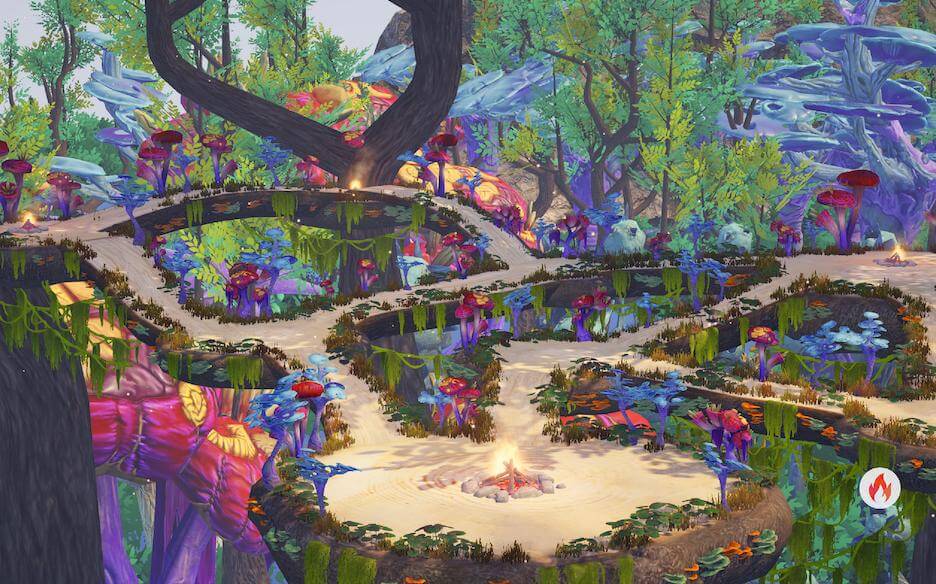
CreatureVerse is a gamified experience platform that allows Connecticut Children’s Medical Center patients to create unique personalized avatars that interact within a virtual environment like the mystical world pictured above.
CR: It goes back to blurring the physical and digital divide. We’re looking to take advantage of both the things that work well in the real world and in a virtual space, then making one cohesive experience that works to the advantages of both those situations. Say for example, I like playing with toy cars, but I also love racing them in a video game. What if I could build my own toy car physically then see it in a video game virtually? We need to look at melting those two experiences together to create one cohesive, narrative experience.
Is there any reason to believe the metaverse or related technology could fizzle out like a fad?
CW: I don’t think it’s a fad, but I think it’s going to take a lot more time than people think. I mean, I probably won’t hang out with my parents in the metaverse, but I probably will with my kids, I would imagine. On the other hand, some people say it’s [the metaverse] already here, so it’s hard to frame up.
CR: That’s exactly it. The metaverse needs a firm definition, a definition of success before we can say whether or not it’s failed. There are ideas under this big umbrella of the metaverse that will absolutely be part of our lives moving forward. Metaverse as a unified concept I think will start to cede to those individual executions. There’s a lot of energy surrounding a very loose concept. When you have that much energy and capital focus on one area, you can’t help but have interesting things emerge from that.
With all that said...
It’s clear there is still quite a bit of uncertainty regarding the metaverse and how these digital approaches will come to a realistic fruition. But there’s one thing we know for sure – here at DI, we’re proactively learning, listening, collaborating and innovating alongside these trends, ready to jump in to continue helping our clients create remarkable experiences.



